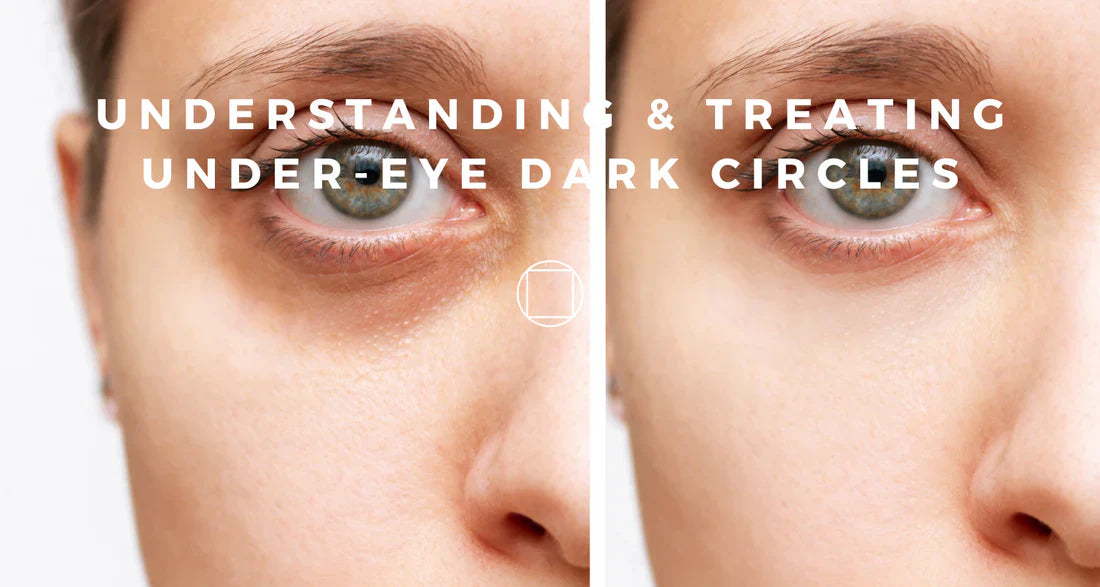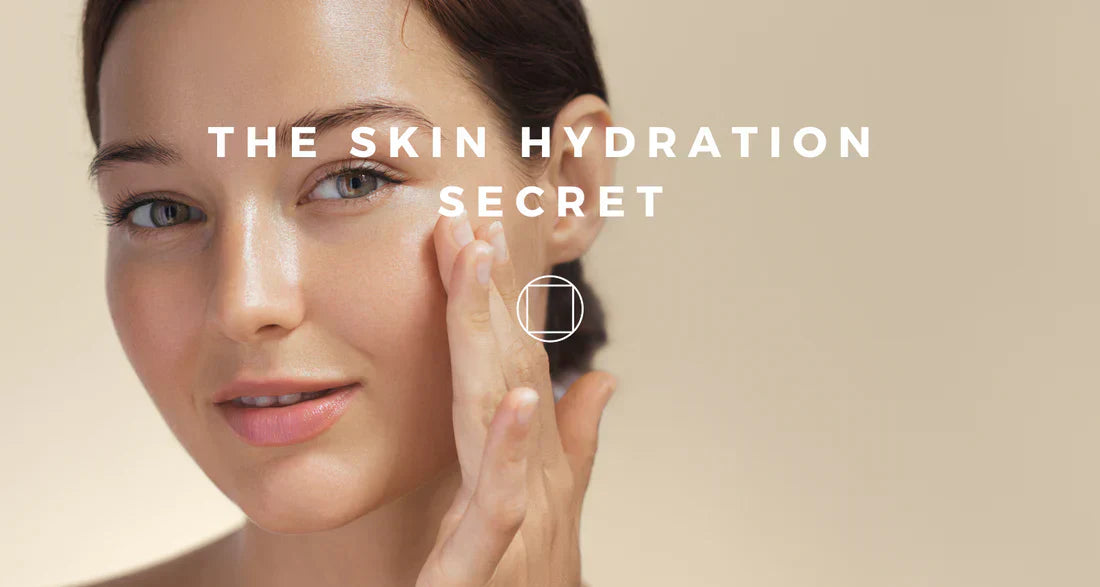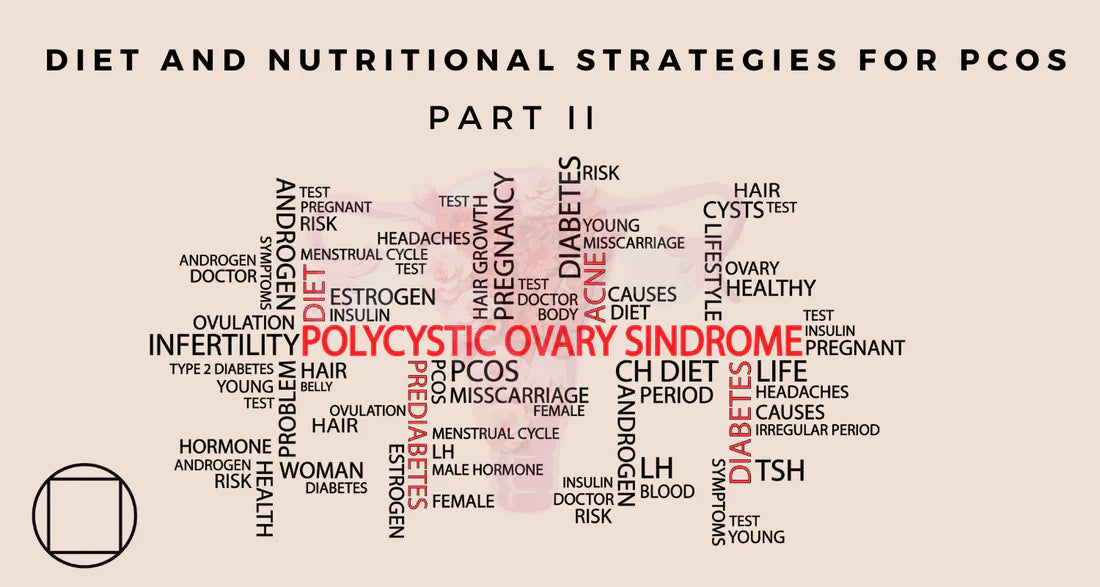
Understanding & Treating Under-Eye Dark Circles
By Benjamin Knight Fuchs, R.Ph.
As skin care professionals, we are often the first point of contact for clients seeking solutions to skin concerns. Under-eye dark circles are a frequent complaint, impacting perceived tiredness and overall appearance. While skilled in concealer application and targeted eye treatments, a deeper understanding of the root causes—particularly the connections to gut health, nutrition, stress, and lymphatic function—will significantly enhance your expertise and enable truly effective, holistic recommendations.
First and foremost, we need to move beyond the somewhat simplistic conventional idea that dark circles are solely due to sleep deprivation. While lack of sleep exacerbates the problem, it's rarely the only factor. Dark circles usually arise from a combination of issues, which needs to be communicated clearly to our clients.
Here's a breakdown of the main culprits, with an expanded focus on internal health:
Hyperpigmentation: More Pigment Than Meets the Eye
Hyperpigmentation refers to areas where the skin produces more melanin, the pigment responsible for skin, hair, and eye color. It's like the skin is using a darker shade of paint under the eyes. Several factors can trigger this excess pigmentation:
-
Dermal Melanocytosis: This condition involves extra melanin-producing cells located deeper within the skin. It can be congenital (present at birth or developing early in life) or acquired over time. Think of it as a "built-in" source of excess pigment.
-
Environmental Exposure: Prolonged sun exposure is a significant contributor to melanin production, leading to hyperpigmentation. Also, exposure to xenoestrogens (estrogen from external sources) can be involved, such as birth control pills, hormone replacement therapy (HRT), cosmetic ingredients (including sunscreens and preservatives), or medications such as antimalarials, some chemotherapeutic agents, and NSAIDs.
-
Post-Inflammatory Hyperpigmentation (PIH): PIH, the skin’s reaction to some type of irritation or trauma, occurs when the skin overproduces melanin in response to injury or inflammation (e.g., acne, eczema, vigorous eye rubbing). Allergic reactions to cosmetics or skin conditions like eczema (atopic dermatitis) are common contributors.
Underlying Blood Vessels: The Visible Network
Imagine the skin as a canvas. If the canvas is very thin or translucent, the underlying structure is more visible. This is what happens with some individuals' under-eye skin, which is naturally thinner than skin elsewhere on the face. In some people, it's even thinner, allowing underlying blood vessels to become more visible, creating a bluish or purplish tint. Furthermore, some people simply have a greater density of blood vessels near the surface in this area. These factors are often genetically determined.
"Pseudo-Herniation" of Orbital Fat: The Shadow Effect
"Pseudo-herniation of orbital fat" refers to the natural fat pads under the eyes that can bulge or protrude with age (or due to genetics). The term "pseudo" indicates that the fat pads are not actually herniating through a weakened area, but instead, they protrude and cast a shadow on the skin, creating the illusion of dark circles.
The Gut-Skin Connection: Digestive Issues, Nutritional Deficiencies, and Food Sensitivities
The health of the digestive system ("gut") is intimately connected to skin health. Gut imbalances or digestive issues can manifest in various skin problems, including dark circles.
-
Leaky Gut (Increased Intestinal Permeability): When the gut lining is damaged, it allows undigested food particles, bacteria, and toxins into the bloodstream. This triggers systemic inflammation, including in the delicate under-eye skin.
-
Malabsorption: Poor gut function may lead to nutrient deficiencies in:
-
Iron: Essential for oxygen delivery; its deficiency makes blood vessels more visible.
-
Vitamin K: Important for clotting; deficiency can worsen blood vessel-related darkness.
-
Vitamin B12 & Folate: Needed for red blood cell formation; their lack may affect skin tone.
-
Vitamin C: Crucial for collagen production and elasticity.
-
Zinc, Copper, Selenium: Deficiencies may also lead to discoloration.
-
-
Food Sensitivities/Allergies: Reactions to gluten, dairy, soy, corn, nightshades, and some nuts can cause inflammation, leading to increased pigmentation and vessel visibility.
Tip: Encourage clients to keep a food diary to identify triggers.
Cortisol: The Stress Hormone's Impact
Cortisol is released in response to stress. While necessary for body regulation, chronic stress has several skin effects:
-
Sleep Disruption → worsens dark circles.
-
Vasodilation → dilated blood vessels become more visible.
-
Skin Thinning → makes underlying structures more apparent.
Lymphatic Leaks and Congestion
The lymphatic system removes fluid, toxins, and cellular debris. The under-eye area is particularly vulnerable:
-
Lymphatic Leaks (not literal leaks, but functional congestion) lead to fluid backup, puffiness, and a darker appearance.
-
Causes: Allergies, sinus infections, dehydration, poor diet, lack of exercise, and medical conditions.
-
Lymphatic Massage: Gentle, upward movements can improve drainage. Teach clients to perform this light stretching technique at home.
The Vicious Cycle: How These Factors Intertwine
These causes often interact, intensifying the problem:
-
Hyperpigmentation beneath fat bulges deepens the darkness.
-
Allergies cause inflammation → PIH + lymphatic congestion.
-
Stress disrupts sleep, gut health, and immunity → worsens all symptoms.
Advanced Treatments to Know About
Even if you're focused on topical and holistic care, knowing the following procedures helps guide your clients:
-
Transconjunctival Blepharoplasty (TCB): Removes bulging fat via internal eyelid incision.
-
Chemical Peels: Help resurface and brighten skin by removing pigmented layers.
Your Role as an Esthetician: A Holistic Approach
Product recommendations:
-
For hyperpigmentation: Vitamin C, niacinamide, low-dose retinol.
-
For hydration and plumping: Hyaluronic acid, collagen, algae/seaweed, fat-soluble Vitamin C.
-
For minimal irritation: Formulas without xenoestrogens, fragrances, or strong preservatives.
Lifestyle suggestions:
-
Gentle eye massage with lymphatic focus.
-
Manage allergies with nutritional antihistamines (Vitamin C, bromelain, turmeric, quercetin).
-
Encourage 7–9 hours of sleep, hydration, and stress-reduction practices (e.g., meditation, yoga).
-
Use mineral sunscreens (zinc oxide, titanium dioxide).
Nutritional notes (within your scope):
-
Encourage antioxidant-rich, non-reactive foods.
-
Recommend foods high in:
-
Vitamin K (leafy greens),
-
Iron (meat, beans),
-
Vitamin C (berries, citrus).
-
-
Suggest probiotics (supplements or yogurt/kefir, if tolerated).
-
Recommend bone broth and collagen-rich foods for gut and skin support.
Referral awareness:
-
Know when to refer to a dermatologist, gastroenterologist, allergist, or surgeon, depending on the underlying cause.
Important Reminders
-
Skin Sensitivity: Each client requires a personalized approach.
-
Post-procedure Redness: Monitor after chemical peels.
-
Even Tone: Sometimes, a full-face peel ensures tone consistency.
By understanding the complexities of dark circles, including the gut-skin connection, nutritional impact, stress response, and lymphatic drainage, you can empower clients to achieve brighter, refreshed eyes and renewed confidence. As estheticians and skincare professionals, think of yourself as a skin health educator—guiding clients toward radiant skin and well-being.


